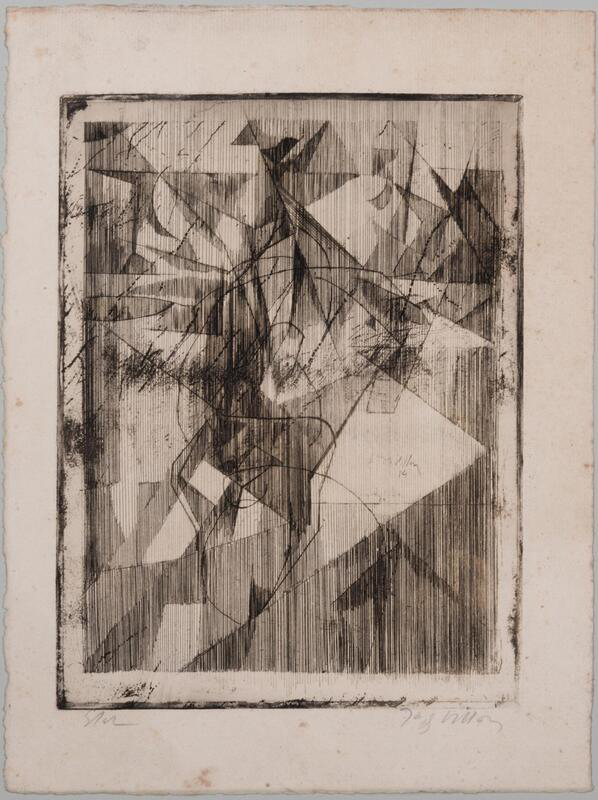
|
|
Le Petit Équilibriste
The Small
Acrobat
Ginestet &
Pouillon E287
etching with
aquatint,
1914, , on
medium-weight cream laid paper (with no visible watermark), a very fine and
possibly unique impression of an undescribed early state, printed with substantial
margins, two deckle edges, signed lower right in pencil, and annotated "Etat" by the artist, lower left.
There is
slight and unobtrusive soiling overall, some light foxing and inky
fingerprints in the margins, and the faint imprint of another larger
blank plate corner on the reverse, otherwise in very good condition
P. 239x175mm., S.
306x222mm.

|
Provenance: the estate of the
artist, through Suzanne Duchamp, Marcel Duchamp, Pierre-Noël Matisse
and Jacquelyn Miller Matisse.
The present impression of this
important print constitutes a exceptional early version in a working
state that is not described in the catalogues raisonnés. It is thus of the utmost rarity, if not unique.
It appears that after Villon
had completed the basic composition, he decided to cut
the plate down to its definitive format, strictly reformatting the image,
and removing the sketchy trial work in the margins of the plate. After reduction, the finished plate measures 220x162mm. (Cf. An impression from the
edition in the Duchamp Archives at
https://www.duchamparchives.org/cp/archive/component/FRM5050-X003175106/fr/)
We have an idea of Villon's approach in creating this work. Here, commenting on his quasi-cubist print, he says:
Tout d’abord c’était une étude directe d’acrobate, et
puis par simplification, par synthèse, ma figure n’a plus été que
lignes et volumes exprimant l’idée d’équilibre.
C’était toujours mon
acrobate mais cela ne représentait plus un acrobate.
[First of all it was a direct study of an acrobat, and then by
simplification, by synthesis, my figure was nothing more than lines and
volumes expressing the idea of balance.
It was still my acrobat but it no longer represented an acrobat.]
- in Denis Martin, Jacques Villon, la donation Charles S. N. Parent, Musée du Québec, 1992, p. 43.
There is also a larger version of this print, L'Équilibriste, (G&P E286),
which was executed in drypoint the year before (see
https://www.moma.org/collection/works/69565) and which also corresponds
to a picture from the same year
(http://www.duchamp-villon-crotti.com/jv-galerie-4web-2/)
* Ginestet
& Pouillon identify the technique as "drypoint", although our
impression appears to be done with etching and aquatint (the MoMA also
describes the print's medium as "etching": see
https://www.moma.org/collection/works/68065), as may be attested by the acid bite in the margins. It may well be that after reduction, Villon
reworked the plate with drypoint to enhance the composition more dramatically, as he also burnished out other areas to fields of white.


